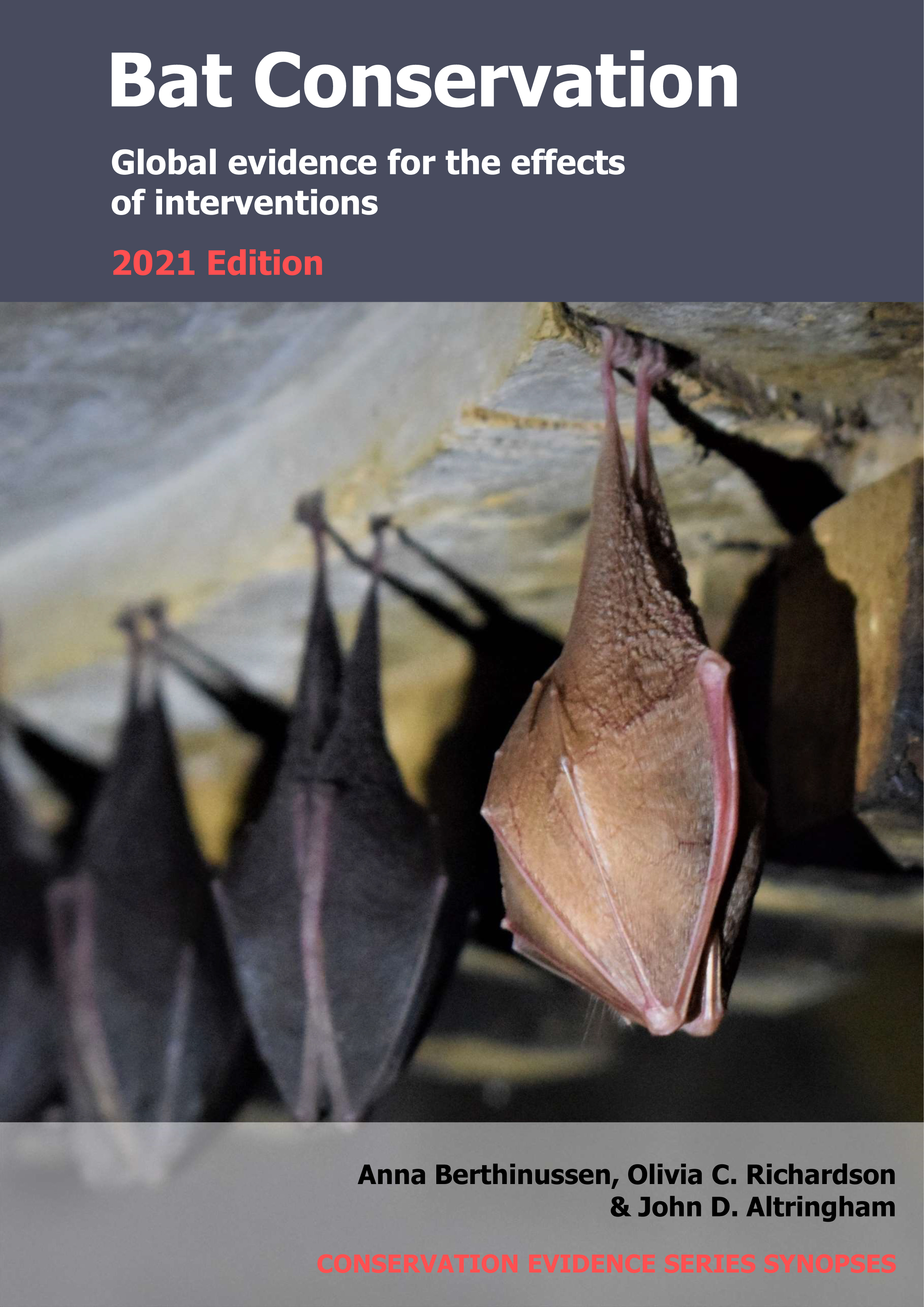Restore bat foraging habitat at ex-quarry sites
-
Overall effectiveness category Unknown effectiveness (limited evidence)
-
Number of studies: 1
View assessment score
Hide assessment score
How is the evidence assessed?
-
Effectiveness
50% -
Certainty
35% -
Harms
0%
Study locations
Supporting evidence from individual studies
A replicated, site comparison study in 2009–2013 of 21 gravel-sand pit sites in France (Kerbiriou et al. 2018) found that restored gravel-sand pits had higher overall bat activity 10 years after restoration than gravel-sand pit sites before or during quarrying, but there was no difference for gravel-sand pits less than 10 years after restoration. Overall bat activity was higher at gravel-sand pits that had been restored more than 10 years previously (average 0.8 bat passes/six minute interval) than at gravel-sand pit sites before or during quarrying (both 0.3 bat passes). However, there was no significant difference between gravel-sand pits restored 5–10 years previously (0.5 bat passes) or less than five years previously (0.4 bat passes) and gravel-sand pit sites before or during quarrying. Twelve bat species were recorded in total (see original paper for data for individual species). Gravel-sand pit sites (average 4 ha) consisted of bare soil and were restored to water, wooded vegetation and meadows after quarrying ceased. At each of 21 sites, 1–5 points (18–37 points/treatment in total across all sites) were sampled with bat detectors during two visits/year in June–September 2009–2013.
Study and other actions tested
Where has this evidence come from?
List of journals searched by synopsis
All the journals searched for all synopses
This Action forms part of the Action Synopsis:
Bat Conservation
Bat Conservation - Published 2021
Update 2020





)_2023.JPG)














